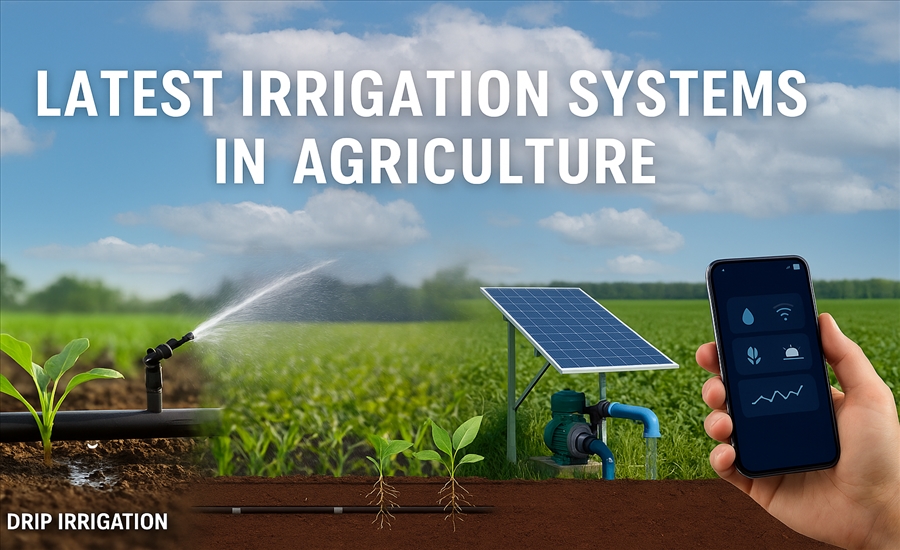Latest Irrigation Systems in Agriculture: Revolutionizing Water Management
 Water is life—especially in agriculture. As climate change continues to affect rainfall patterns and water scarcity becomes a growing concern, farmers around the world are turning to modern irrigation technologies to ensure crop productivity. These smart irrigation systems help save water, reduce costs, and improve yield.
Water is life—especially in agriculture. As climate change continues to affect rainfall patterns and water scarcity becomes a growing concern, farmers around the world are turning to modern irrigation technologies to ensure crop productivity. These smart irrigation systems help save water, reduce costs, and improve yield.1. Drip Irrigation: Precision at Its Best
Drip irrigation delivers water directly to the roots of the plants using a network of valves, pipes, and emitters.
Benefits:
-
Saves up to 70% water compared to traditional methods.
-
Reduces weed growth by keeping other areas dry.
-
Enhances crop yield and quality.
2. Sprinkler Irrigation: Mimics Rainfall
Sprinkler systems spray water over the crops like artificial rain, making it suitable for almost all types of crops.
Benefits:
-
Uniform distribution of water.
-
Easy to install and maintain.
-
Ideal for large fields and grain crops.
3. Smart Irrigation with IoT Sensors
Smart irrigation uses sensors, mobile apps, and automation to deliver the right amount of water at the right time.
Features:
-
Soil moisture sensors monitor the soil in real-time.
-
Weather forecasting prevents over-irrigation.
-
Controlled through smartphones or dashboards.
Benefits:
-
Water savings up to 50%.
-
Remote monitoring & automation.
-
Reduces manual labor.
4. Solar-Powered Irrigation Systems
Solar irrigation systems use solar panels to power water pumps, making them eco-friendly and perfect for remote farms.
Benefits:
-
Low operational costs.
-
Sustainable and environmentally friendly.
-
Works well in off-grid areas.
5. Subsurface Drip Irrigation (SDI)
An advanced form of drip irrigation, SDI involves placing the drip lines below the soil surface, right near the plant roots.
Benefits:
-
No water loss due to evaporation.
-
Prevents disease by keeping foliage dry.
-
Long-lasting and low maintenance.
6. AI and Data-Driven Irrigation
Combining artificial intelligence with data analytics, this cutting-edge system:
-
Analyzes historical weather and crop data.
-
Predicts water needs accurately.
-
Adjusts irrigation schedules automatically.

